The indulgences of the 1980s fed Japan’s direct-to-video anime market in the decade’s latter half, ensuring that the acronym OVA would remain part of the nerd lexicon. Companies turned just about any idea into at least 45 minutes of animation, even if that idea consisted of nothing more than a giant mecha, a big-eyed heroine, or some combination of the two. Ideally, the OVA boom would’ve spurred a wealth of creative animation from rising talents, but instead it brought a deluge of vapid waste with occasionally nice animation and all the enduring quality of a Sci-Fi Channel Original Movie. The typical 1980s OVA is not Angel’s Egg. It is Ladius, Good Morning Althea, Roots Search, Explorer Woman Ray, Relic Armor Legaciam, or anything else so generic that it’s hard to remember the title. I think one of them was called Steel Guarder Lyzerial.

California Crisis: Gun Salvo, a 1986 radar blip from Studio Unicorn, is smack-dab in the middle of this nonsense. It lasts under an hour, and its story pitch could be summed up in restroom graffiti. It’s a ridiculous joyride that imitates the shallowest parts of shallow action films.
Yet California Crisis stands a little above the dross.
For one thing, it looks different. It’s animated with linework and shadows much heavier than the typical ‘80s cartoon from Japan or anywhere else. And instead of servicing a story about toy-ready mecha, Tokyo teenagers, or robot-demon warfare in the dead of space, California Crisis is all about the glorious sun-baked façade of America.
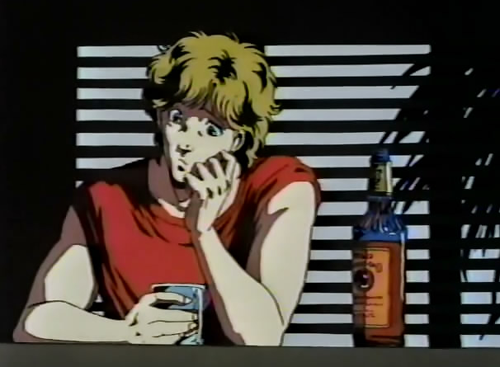
Noera doesn’t have much in his life. His high-school glories are a decade past, and he spends the opening of California Crisis reminiscing in a bar just outside of San Diego. At least he has his blond good looks, a gorgeous vintage car, and nothing to do but take a leisurely drive while listening to a news report about a crashed meteorite. A young redhead pulls alongside to ask for directions and call him “Pops,” and that’s when a truck runs them both off the road and crashes itself. Armed thugs chase them away, but not before the redhead, Marcia, recovers a mysterious box from the wreckage.
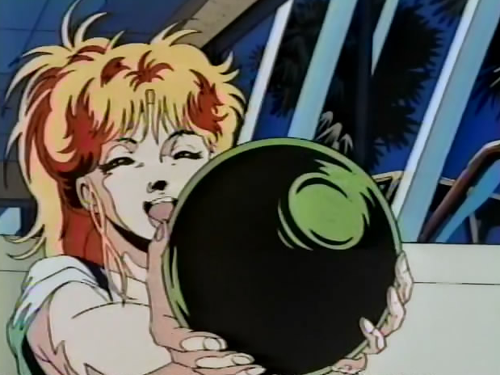
Regrouping at a diner, Noera and Marcia learn that the box contains a bowling ball, or at least a curious sphere that resembles a bowling ball. It summons visions of Death Valley at their touch, and Marcia declares that they should take this alien visitor to its apparent home. Her rationale? "American Dream." That's what she says.
A reluctant Noera goes along once some armed goons arrive, and from there the two race around southern California, closely followed by a government task force that includes one of Noera’s high-school pals.
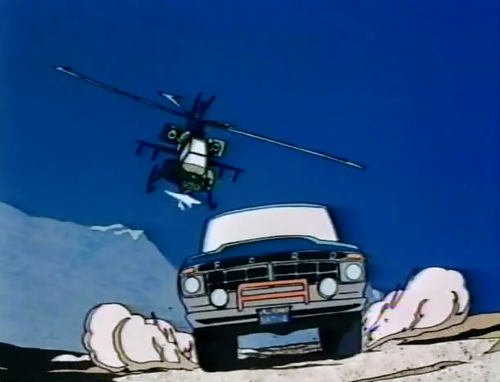
Noera and Marcia drift along, pausing to enjoy lavish scenes of billboards, restaurants, nightclubs, countryside, and other SoCal sights that I assume the animators researched first-hand. At least I’d like to think that writer-director Mizuho Nishikubo (who'd direct the largely disposable Digital Devil Story: Megami Tensi OVA the following year) and his crew got a nice vacation out of all this.
Their creation isn't realistic, of course. Anyone who actually lived in California, in the 1980s or outside of it, will see only a ridiculous mockery in the whitebread characters and complete void of consequences, physical or otherwise. But that’s OK, because California Crisis is almost over.
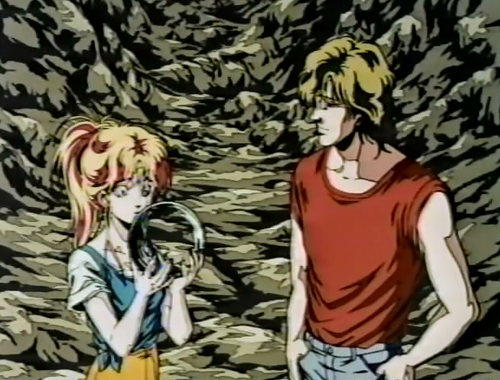
Our heroes eventually arrive at Death Valley and, harried by helicopter fire, plunge off a cliff and into a lake. As they’re on the verge of drowning, their spherical cargo glows and draws them out of the water. Noera and Marcia stand on the shore, gazing at the cracked and empty alien orb as copter blades drone nearby.
And that’s the ending. Really. It cuts straight to a shot of Noera and Marcia riding off with a new car and a new bike, while pop singer Miho Fujiwara reminds us all that the streets are hot—perhaps even too hot. She’s very nice, and you might even see her comment on YouTube.
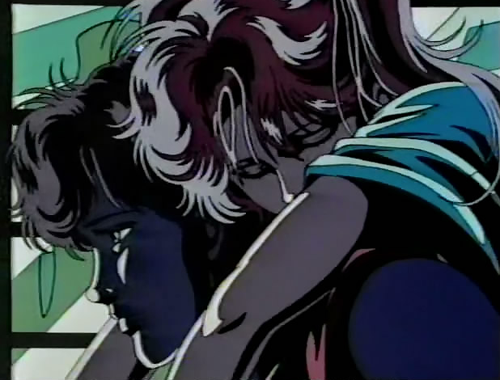
California Crisis is striking in its refusal to mean anything. Two complete strangers are chased by government agents. A nightclub is visited for no reason. Perfectly good cars are abandoned. There's a pet cat along for the ride. A carefree young woman declares “American Dream!” in a diner before deciding to risk her life for a Sputink-shaped UFO. A rickety pickup truck and an attack helicopter have a canyon chase and a head-to-head showdown. Casual sex is offered and turned down. A vagrant alien artifact does nothing beyond a single anticlimactic rescue. There’s no lasting message, no potential relationship, no ending, no point.
And yet California Crisis is a perfect summation of the 1980s. Not the 1980s as they actually happened, but the 1980s as they were stereotyped even while they occurred, and as they may well be remembered by the terse, distant estimation of history. It’s pretty, it’s hollow, and it’s suddenly over.
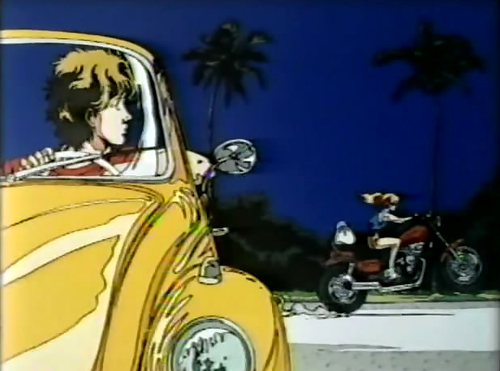
The only resolution for the tale sees Noera and Marcia going their separate ways, and that’s what awaited the OVA boom at the end of the decade. Japan’s economic bubble popped as the 1990s arrived, while America had a brief recession and swept away its ‘80s neon gobbledygook with a uglier tide of grunge rock and disaffection. Everyone moved on and grew up a little. In fact, Nishikubo recently directed Mamoru Oshii's Miyamoto Musashi film and the prestigious/propagandic historical drama Giovanni’s Island.
So California Crisis captures two worlds in their vivid inanity. What did most of Japan’s direct-to-video cartoons and America’s flashfire pop overkill really accomplish in the 1980s? Not a whole lot. But they looked good doing nothing.
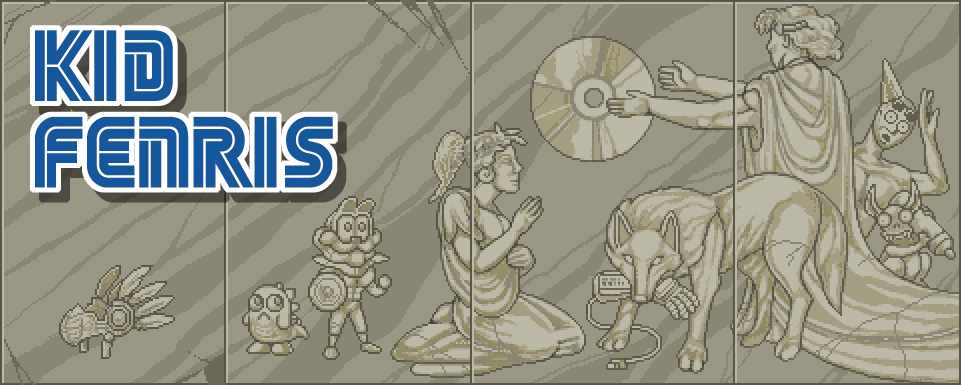
I'm a little late to the party on this knowledge but the lovely Miho Fujiwara also provided vocals on the 1984 album Chocolate Lips.
ReplyDelete